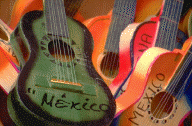

What subject matter is considered essential in today's curriculum?
What is the purpose of education in contemporary society?
Why study the arts?
Is there a place for arts in the curriculum within this standards-based instructional system?
 Answers to these questions vary according to the historical and cultural values
of a particular time and place in history. The needs of current society
dictate educational goals, objectives, and standards. Now that we have
high academic performance standards that we expect all students to achieve in
all subject matter, the arts often fall to the wayside. Although it would
be wonderful to dedicate time to the arts as we have in past eras, the reality
is that we often have to slip the arts in through the back door! One way
to make sure our students still receive instruction in the arts is to integrate
the arts into other parts of the core curriculum. This may not be ideal
for those of us who view arts as central to life. But, the reality of
classroom with its emphasis on test preparation and limited amount of time for
teaching anything but the basics - or what is being tested - presents a
real challenge for the elementary teacher! We've discussed the
integration of music with literacy, math, and science, but one of the easiest
areas in which to integrate the arts is social studies. In fact, the arts
are an important part of the national and state social studies and history
curriculum standards. The visual and performing arts standards and the
history/social science standards overlap throughout each grade level. The
areas of the California History Social Science previous framework that emphasized the
arts are:
Answers to these questions vary according to the historical and cultural values
of a particular time and place in history. The needs of current society
dictate educational goals, objectives, and standards. Now that we have
high academic performance standards that we expect all students to achieve in
all subject matter, the arts often fall to the wayside. Although it would
be wonderful to dedicate time to the arts as we have in past eras, the reality
is that we often have to slip the arts in through the back door! One way
to make sure our students still receive instruction in the arts is to integrate
the arts into other parts of the core curriculum. This may not be ideal
for those of us who view arts as central to life. But, the reality of
classroom with its emphasis on test preparation and limited amount of time for
teaching anything but the basics - or what is being tested - presents a
real challenge for the elementary teacher! We've discussed the
integration of music with literacy, math, and science, but one of the easiest
areas in which to integrate the arts is social studies. In fact, the arts
are an important part of the national and state social studies and history
curriculum standards. The visual and performing arts standards and the
history/social science standards overlap throughout each grade level. The
areas of the California History Social Science previous framework that emphasized the
arts are:
Historical literacy
Cultural literacy
Geographical literacy
National Identity
The olden days...
Below are quotes from philosophers on what was considered "essential" for education during three very different time periods. Plato valued mathematics and "harmonics." Dewey described education as "life" and all that life is, including arts and culture. Howard Gardner, the leader of early multiple intelligences research and part of Project Zero promotes the idea that we must understand and enhance learning, thinking, and creativity in the arts, as well as humanistic and scientific disciplines, at the individual and institutional levels. Howard Gardner's speech is obviously the most timely for us as teachers today. Note that quotes Plato:
"Through education we need to help students find pleasure in what they have to learn."
|
|
Plato's Academy - and His Recommended Course of Study
|
|
|
John Dewey - 1897 If education is life, all life has, from the outset, a scientific aspect, an aspect of art and culture, and an aspect of communication. It cannot, therefore, be true that the proper studies for one grade are mere reading and writing, and that at a later grade, reading, or literature, or science, may be introduced. The progress is not in the succession of studies but in the development of new attitudes towards, and new interests in, experience. I believe finally, that education must be conceived as a continuing reconstruction of experience; that the process and the goal of education are one and the same thing. |
|
The Arts in Education Today
One of the most rigorous current research projects focusing on the arts in education is Project Zero, begun by Nelson Goodman of Harvard. Howard Gardner has continued to help carry out the Project Zero mission "to understand and enhance learning, thinking, and creativity in the arts, as well as humanistic and scientific disciplines, at the individual and institutional levels. The research programs are based on a detailed understanding of human cognitive development and of the process of learning in the arts and other disciplines. They place the learner at the center of the educational process, respecting the different ways in which an individual learns at various stages of life, as well as differences among individuals in the ways they perceive the world and express their ideas." Project Zero's Thinking Routine Toolbox Edutopia Video: Howard Gardner on Multiple Intelligences
|
|
|
An
Education for the Future: Howard
Gardner
|
The
first dilemma: What should be taught?
What should be highlighted: facts, information? data? If so, which of the countless facts that exist? Subject matters and disciplines--if so, which ones? Which science, which history? Should we nurture creativity, critical thinking? If there is to be an additional focus, should it be arts, technology, a social focus, a moral focus? If you try to have all of these foci, you would break the backs of students and teachers, even given a demanding elementary and secondary school curriculum. If knowledge doubles every year or two, we certainly cannot multiply the number of hours or teach twice as quickly. Some choice, some decisions about what can be omitted, is essential. |
|
The second value is an appreciation of what is special about human beings. "Human beings have done many terrible things but countless members of our species have done wonderful things as well: works of art, works of music, discoveries of science and technology, heroic acts of courage and sacrifice. One only need walk around the Rijksmuseum or the Stedelijk, or to spend hours in and around the buildings on Dam Square to be reminded of what has been achieved over the centuries in this small but dynamic nation. Our youngsters must learn about these achievements, come to respect them, have time to reflect about them (and what it took to achieve them) and aspire some day to achieve anew in the same tradition…or perhaps even to found a new tradition. Learning about human heroism may be another clue to how to nurture youngsters who embody positive values. We should not be afraid to state our values; but of course it is far more important to embody them, to live them day in and day out. The scholarly disciplines are among the most remarkable of human achievements--and we must remember that they are much easier to destroy than to build up. Totalitarian societies first burn the books; then they humiliate the scholars; then they kill those who do not buckle under. As the events of the last century remind us, a Dark Age can always descend upon us. We should remember that one of the most magnificent of human inventions is the Invention of Education--no other species educates its young as do we. At this time of great change, we must remember the ancient value of education and preserve it--not just facts, data, information, but Knowledge, Understanding, Judgment, Wisdom. We must use the ancient arts and crafts of education to prepare youngsters for a world that natural evolution could not anticipate and which even we ourselves as conscious beings cannot fully envision either. In the past, we could be satisfied with an education that was based on the literacies; that surveyed the major disciplines; and that taught students about their own national culture. We must maintain these three foci, but we must add two more: preparation for interdisciplinary work and preparation for life in a global civilization. And, speaking in the land of Erasmus and Spinoza, we must keep alive the important values of Responsibility and Humanity." |
|
|
|
|
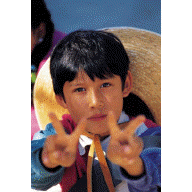
What should we teach?
What should students know and be able to do?
What is the impact of the arts on history and culture?
Our standards give us a guide to the content of knowledge we must consider important in our curriculum planning.
|
The National Standards for the Arts (1994) What students should know and be able to do in the arts....
The Importance of Arts Education Knowing and practicing the arts disciplines are fundamental to the healthy development of children's minds and spirits. That is why, in any civilization—ours included—the arts are inseparable from the very meaning of the term education. We know from long experience that no one can claim to be truly educated who lacks basic knowledge and skills in the arts. There are many reasons for this assertion:
The Benefits of Arts Education Arts education benefits the student because it cultivates the whole child, gradually building many kinds of literacy while developing intuition, reasoning, imagination, and dexterity into unique forms of expression and communication. This process requires not merely an active mind but a trained one. An education in the arts benefits society because students of the arts gain powerful tools for understanding human experiences, both past and present. They learn to respect the often very different ways others have of thinking, working, and expressing themselves. They learn to make decisions in situations where there are no standard answers. By studying the arts, students stimulate their natural creativity and learn to develop it to meet the needs of a complex and competitive society. And, as study and competence in the arts reinforce one other, the joy of learning becomes real, tangible, and powerful. |

National Standards for Music: 1994
Archives: https://nafme.org/my-classroom/standards/national-standards-archives/
8. Content Achievement Standard: Understanding relationships between music, the other arts, and disciplines outside the arts
9. Content Achievement Standard: Understanding music in relation to history and culture
|
California Music Standards The myths and religions of many cultures depict music as a gift of divine origin. The word music comes from the Greek Muse, any of the nine sister goddesses who reigned over the arts and sciences in Greek mythology. Existing in every culture and generation, music embodies the distinctly human need to organize sounds to express the dimensions of human feeling. Music is a powerful manifestation of cultural heritage. It occurs in a wide variety of styles and types in cultures around the world. Studying music helps students learn about the traditions and modes of thought of their native cultures as well as those of other cultures. Because music can promote harmony between cultures in a pluralistic society, mutual cross-cultural understanding is a goal of music education. Quotation from the Introduction to Music in the California Visual and Performing Arts Standards http://www.cde.ca.gov/standards/vpa/
|
3.0 HISTORICAL AND CULTURAL
CONTEXT
Understanding the Historical Contributions and Cultural Dimensions of Music
Students analyze the role of music in past and present cultures throughout the world, noting cultural diversity as it relates to music, musicians, and composers.
4.0 AESTHETIC VALUING
Responding to, Analyzing, and Making Judgments About Works of Music
Students critically assess and derive meaning from works of music and the performance of musicians according to the elements of music, aesthetic qualities, and human responses.
5.0 CONNECTIONS,
RELATIONSHIPS, APPLICATIONS
Connecting and Applying What Is Learned in Music to Learning in Other Art Forms
and Subject Areas and to Careers
Students apply what they learn in music across subject areas. They develop competencies and creative skills in problem solving, communication, and management of time and resources that contribute to lifelong learning and career skills. They also learn about careers in and related to music.
Other State Standards for Music Education - http://www.educationworld.com/standards/state/toc/index.shtml#arts
Social Studies and History Standards - Integrating the Arts into Curriculum
California History and Social Science Framework Goals and Curriculum Strands
Historical Literacy
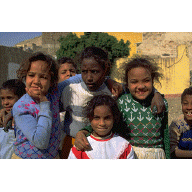
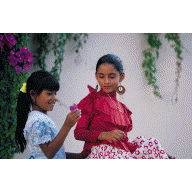
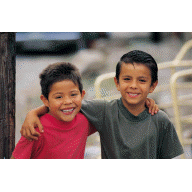

Cultural History
Geographic Literacy
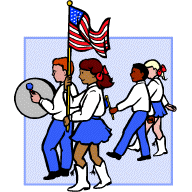 National Identity
National Identity
"America, as a nation, unites as one people the descendants of many cultures, races, religions, and ethnic groups. The American story is unfinished, and the outcome rests in the students’ hands."
 National Council for the Social Studies
National Council for the Social StudiesNational Standards Thematic Strands in Social Studies
Look for connections to the arts in the National Thematic Strands for the Social Studies.
Ten Thematic Strands in Social Studies
History and Social Studies Websites
California Department of Education History and Social Science Standards and Frameworks - http://www.cde.ca.gov/ci/hs/
National Council for the Social Studies – http://www.ncss.org/
National Standards for Social Studies - http://www.socialstudies.org/standards/
National Standards for Social Studies – ISTE NETS - http://cnets.iste.org/currstands/index.html
National Standards for History - http://www.sscnet.ucla.edu/nchs/standards/
National Center for History in the Schools - http://www.sscnet.ucla.edu/nchs/
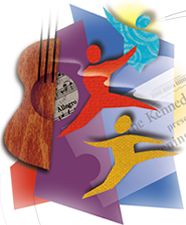


Copyright 2003 by Carla Piper, Ed. D.